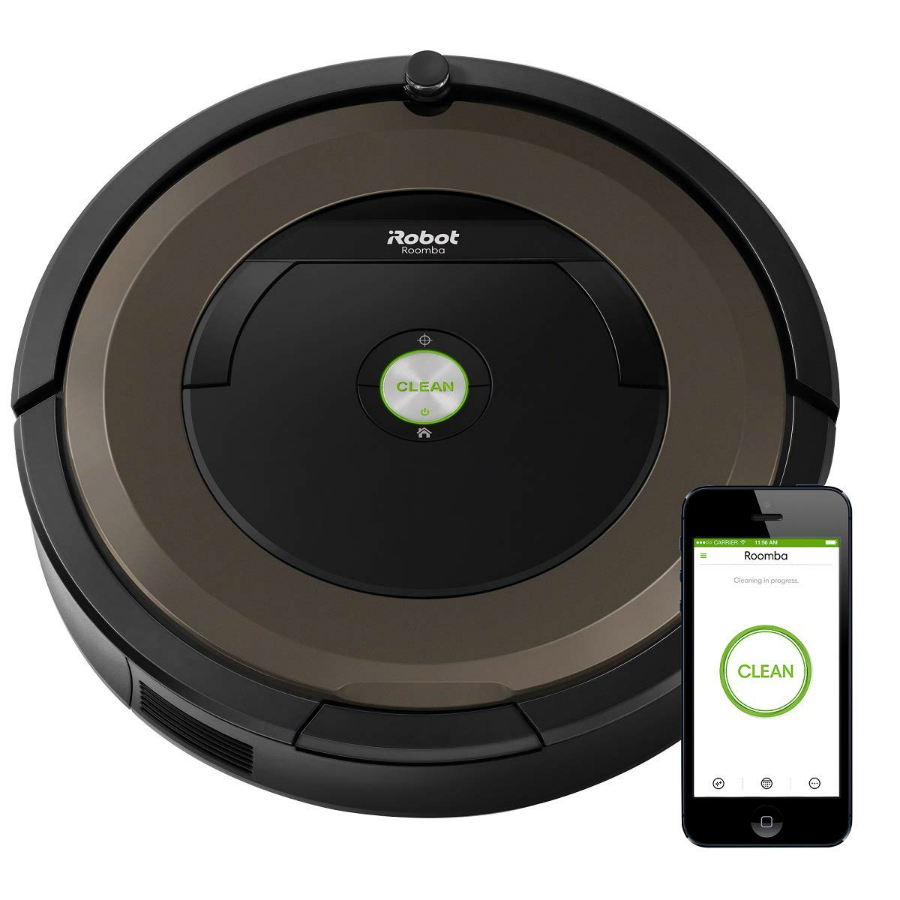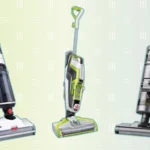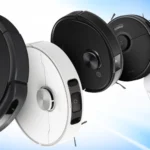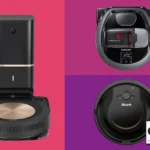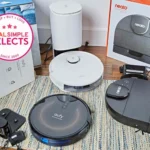During the process of buying a robotic vacuum cleaner, you must have come across the word Roomba. It is a renowned robotic vacuum brand, with several designed models in the shops. Over the years, the debate has ensued on which models and series are reliable and efficient.
It is quite common for a buyer to be confused over which model to buy. It is also important to note that different models have various features that have peculiarities as well. The Roomba 890 vs 960 reviews are quite the argument as people try to understand which of the models is better for purchase.
Also Read: Roomba 960 vs 980 – Understanding Their Similarities and Differences
The 890 version is one of the most discussed models, and it premiered before the Roomba 960. Its properties and capabilities are compared with other models from the renowned brand. This review is looking into breaking down these models and describing their differences in design and function ability.
It discusses the parts of the models and their functionality, the cleaning ability, the voice commands used on the items, Wi-Fi, remote control of the devices, and the navigation technology each model uses as well as the way it enables its functionality. The information offered is aimed to help people understand versions 890 and 960 by Roomba.
Also Read: Roomba 690 vs 890: Make the Right Choice for Your Needs
Roomba 890 vs 960: Comparison Table
These robotic vacuum models are different in their specifications and characteristics. There are several things that set them apart. Hence, it results in a difference in performance and appearance. Here is a comparison table showing both the similarities and differences.
| Features | Roomba 890 | Roomba 960 |
|---|---|---|
| Navigation technology | iAdapt | iAdapt |
| Battery life | 18-36 months | 18-36 months |
| Run time | 60 minutes | 75 minutes |
| Charging time | 2-3 hours | 2-3 hours |
| Dust bin size | 0.31 | 0.31 |
| Virtual barrier | Yes | Yes |
| Noise | 68 dB | 65 dB |
| Built-in camera | No | Yes |
| Remote control | iHome App | iHome App |
| Full bin indicator | Yes | Yes |
| Entire level cleaning | No | Yes |
| Wi-Fi connectivity | Yes | Yes |
| Vacuum technology | Aeroforce | Aeroforce |
| Clean map report | No | Yes |
| Memory mapping | Yes | Yes |
Accessories:
| Roomba 890 | Roomba 960 |
|---|---|
| Virtual wall barrier | Virtual wall barrier |
| Charging station | Charging station |
| HEPA filter | HEPA filter |
| Spinning brush | Spinning brush |
Parts and Accessories of Irobot Roomba 890
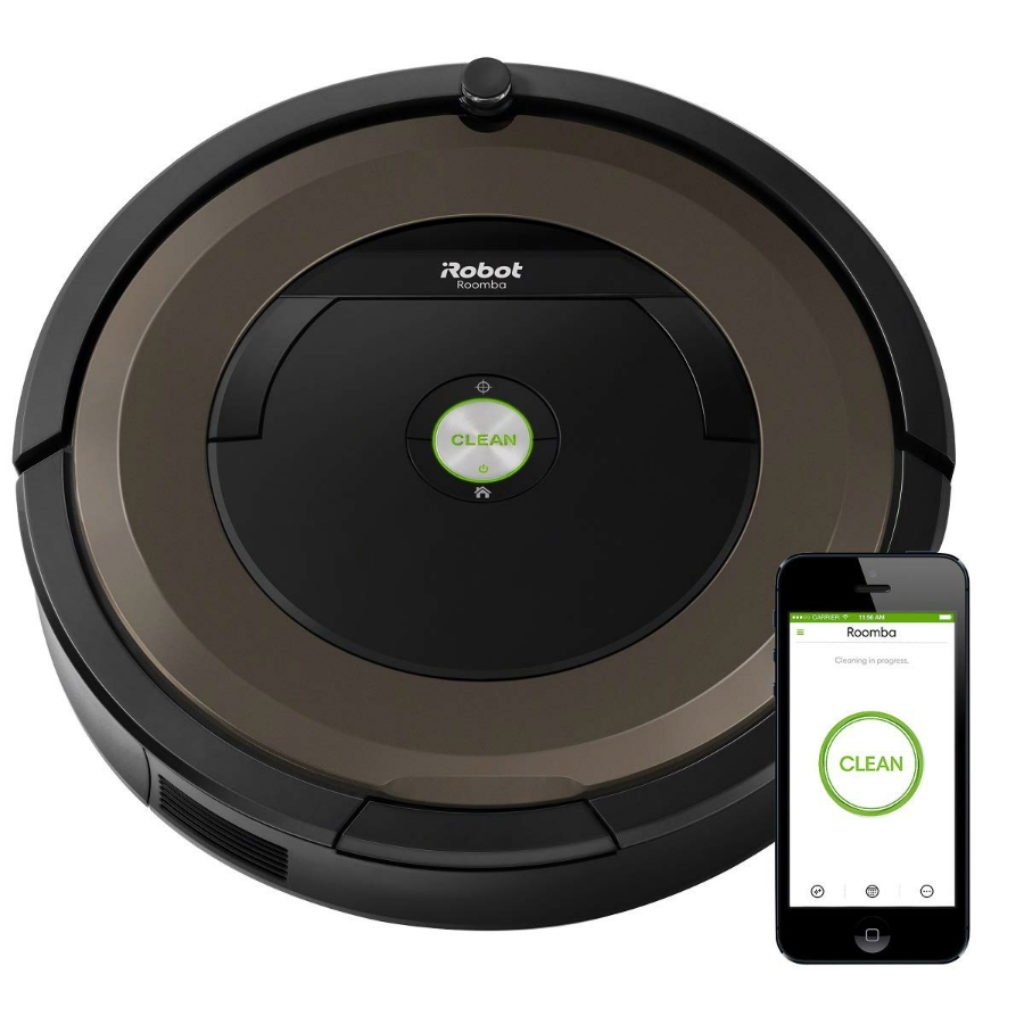
Every Roomba robotic vacuum model comes with unique accessories. This fact sets each model apart from the other, and the difference in how they work and their efficiency arises. The Roomba 890 vs 960 review shows that these two robotic models are quite different in their specifications and also belong to two unique series of models. The Roomba 890 vacuum cleaner has the following parts.
HEPA Filter
The aero force used by the vacuums features a filtration system, which ensures that debris particles are filtered entirely for a smooth finish. It aids in the entrapment of large masses of small particles hence clearing dust off the surfaces completely instead of recirculating it.
Virtual Wall Barrier
Two methods allow the creation of cleaning boundaries by using the virtual wall barrier. There is the halo method and the straight one. The halo setting creates a barrier of up to a diameter of 4′, which allows the user to clean sensitive areas of the house. This technology makes a protective circle around those areas that are quite delicate in the house, like around pieces of furniture. With the straight method, it ensures that the item works around bug open areas as well as pathways because it secures a barrier of about 10′ long.
Spinning Brush
The Roomba 890 comes with a spinning brush that is attached to the machine during cleaning to aid in accessing the problematic areas in the house like furniture edges. It helps with the removal of hair and other sticky particles that may be found in carpets and surfaces.
Charging Station
Noteworthy, when the Roomba 890 realizes that its charge is almost up, it automatically returns to its charging station for charging. When it’s full, it can resume cleaning, which is quite the opposite of the Roomba 960, which can recharge and resume while the charging is ongoing.
Parts and Accessories of Irobot Roomba 960
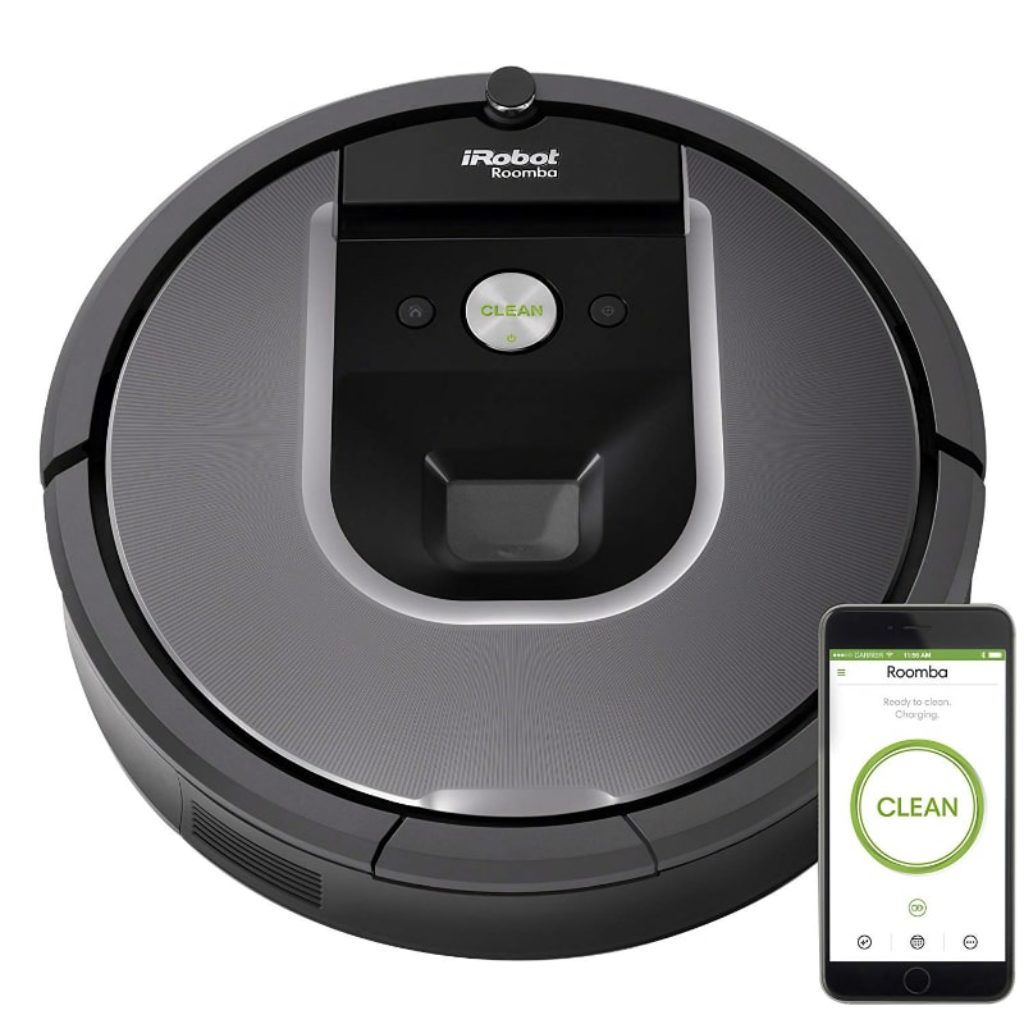
The Roomba 960 robotic vacuum is the most advanced model in the 900 series. The robot has been designed with advanced features that make it stand out. The device has also advanced its cleaning technique over other iRobot models.
Virtual Wall Barrier
The Roomba 960 comes with this virtual wall barrier that is aimed to ensure that every part or area on the floor is clean. This is because specific spaces can be blocked off from the machine.
Charging Station
When this model realizes or monitors that its charge is almost up or low, it automatically gets back to its charging station, to get recharged and resumes cleaning immediately from where it left off. This is quite a unique feature in this model since the Roomba 890 does not possess this characteristic at all.
HEPA Filter
This filter works with the vacuum tech filtration system to ensure that the Roomba 960 can offer way better filtration, and no dirt is left on the floor. The filter is highly recommended because of its ability to minimize dust when the vacuum is used.
Spinning Brush
The Roomba 960 comes with a spinning brush that is always attached to the underside of the machine to ensure that the device can clean areas that prove to be difficult like floor corners, and the dirt does not accumulate. This enables the vacuum cleaner to suck up the dirt off the surfaces.
Cleaning Performance of the Devices – Head-to-Head Comparison
The models Roomba 890 and 960 both have good cleaning performance, which has been appreciated by the customers. These two items vary in dealing with different surfaces, and each of them has different cleaning accessories that help to boost their performance.
1. Edge Cleaning
Roomba robotic vacuums are all designed with side brushes that help in cleaning the edges of the furniture and walls. They are also used in cleaning corners. Therefore, both the Roomba 890 and 960 possess this feature.
However, Roomba 960 takes things a notch higher as it is equipped with an edge cleaning mode. The edge cleaner does a thorough job of tidying the borders. Side brushes work on getting the dirt off the edges and push them to the center of the room for collection where the vacuum picks them up. The only disadvantage to this cleaning feature is that it takes up much time, hence it may drain the battery power faster.
2. Spot Cleaning and Debris Extractors
Both robotic vacuums have the spot cleaning mode. If a specific area needs a deep cleaning, the device goes to this particular spot and does thorough work in a cycle of about three feet around the place. Sensors will notify the vacuum once the spot is clean; therefore, it will get back to cleaning the area it was in before being reassigned.
Debris extractors are found on each Roomba model, and they are brushless. The main job of the extractors is to break down large debris particles and ensure they are ready for collection. The extractors can rewind themselves in case they feel they have collected something they should not have like a cat’s tail. They help in the collection of the larger debris, and since they are tangle-free, the extractors do not log on carpet fibers and strings, making them easy to clean.
3. Cleaning Performance on Different Surfaces
Due to the peculiarities of the design of the models by Roomba, it is essential to examine their performance on various surfaces. Let’s have a deeper look at the subject by observing this precise description.
Hardwood/Tile/Linoleum/Vinyl
Both the Roomba 890 and 960 robotic vacuums are capable of coping with hardwood cleaning. The Roomba 890 vs 960 reviews show that the Roomba 890 does quite a remarkable job while cleaning hardwood floors. The vacuum cleans off all cereal particles as well as rice and sugar, while a bit larger particles are cleaned on a larger scale but not entirely. The Roomba 960, on the other hand, cleans all dirt particles on hardwood and tiled floors and leaves no dirt behind.
Thick Carpet (Polypropylene Fiber)
The Roomba 960 vacuum, when put to work on a thick carpet, did an exceptional job of clearing away all the debris. However, the vacuum could not handle small particles of salt due to the height of the fiber present in the carpet. The Roomba 890 cleared all the debris off the thick carpet as well but could not get rid of the salt particles. In this case, both items were efficient but could not reach the tiny particles collected deep down in the carpet.
Thin Carpet (Nylon Fiber)
The performance of the Roomba`s devices on the thin carpet was quite similar because both vacuums managed to clean the debris on the carpets. Although version 890 handled only 65% of sugar. The Roomba 960 successfully dealt with 52% and did not manage to get a few other particles during the cleaning process.
What About Pet Hair?
Both vacuums can clean pet hair off the surface of any floor, whether it is hardwood, thick, or thin carpets. Pet hair does not tangle on the brushes, and it can be cleaned with other debris found on the ground.
4. Battery Life
A decent and reliable Roomba 960 vs 890 review would show that all Roomba vacuum batteries can be replaced once they are not working anymore. The Roomba 890 battery lasts for about 60 minutes, and it has a capacity of 1800 mAh. The battery charges for 2-3 hours, but this process may take longer if the battery has been out of use for a long time. The Roomba 960 battery, on the other hand, has a capacity of 2600 mAh and can run for approximately 75 minutes. It fully charges for 2-3 hours as well. Both batteries are composed of lithium-ion.
5. Maintenance Peculiarities
Maintaining the Roomba 890 is quite accessible since it requires the user to know when to empty the bin, replace parts, and clean the filter. This makes the operation of both models relatively similar to the infrequent tasks like replacing the batteries and the debris extractor. You need to change the HEPA filter in Roomba 890 after every 2 months, the spinning brush – after 6 months, and the front wheel and debris extractor are replaced after 12 months. The battery lasts for 18-36 months, after which one should replace it.
The Roomba 960’s HEPA filter also needs a replacement after 2 months, its spinning brush – after 6 months, and the front wheel – after 1 year. The debris extractor lasts for 12 to 24 months, and the battery can work for 18 to 36 months before the essential replacement. To maintain the Roomba 960, you should spend approximately $35 a year.
6. Voice Control
Smartphones are no longer the only devices that use wireless connectivity to control Roomba vacuums. An individual can link up either of the models by voice commands like Alexa and Google Home. Through these voice commands, one can start, locate, pause, and stop the models. Generally, if you have more than one robot in your house, it is advisable to give each of them a name for easy control of the robot.
7. Mapping and Navigation Technology
The iAdapt navigation and mapping technology are used on both models of robotic vacuum cleaners. The Roomba 890 uses the technology to help in mapping and moving around the room, and the 960 model uses iAdapt 2.0 and VSLAM technology to detect walls, stairs, and obstacles while cleaning.
The 890 is equipped with sensors that detect dirt, and this helps in ensuring the entire space is cleaned. The Roomba 960 has a camera that allows the vacuum machine to detect dirt even before the particles will be picked up by the touch sensors. This aids in better mapping and navigation of the area by the model.
Differences Between the Models 890 and 960
When purchasing robotic vacuum cleaners, it is necessary to know the fundamental differences between these products. This knowledge enables people to make informed decisions and ensure one is fully aware of the appropriate vacuum to buy.
1. Navigation Technology
The iAdapt 2.0 technology, which is installed in the Roomba 960, helps in navigation. To assist the robot vacuum with the best routes for cleaning, VSLAM technology, and smart mapping is used. The 890 Roomba robot, on the other hand, utilizes the iAdapt mapping and navigation technology.
Also Read: Roomba 890 vs 980: an Evaluation of the Models by Roomba
Version 890 does not have a camera in connection, but the series 960 features the installed camera. It helps with the navigation and mapping of the area. The camera is mounted at the top of the robotic vacuum. The Roomba 890 also works on the area assigned to it in one pass, but the 960 model is capable of a double pass for a more thorough check. Additionally, it can send a clean map report, unlike the 890 models.
2. Bin Indicator
The 890 model stops working when the full bin indicator immediately comes on. On the contrary, item 960 will continue working despite the indicator having given you a warning. The 890 will, therefore, have to be emptied before work resumes. The feature of entire-level cleaning is found in the Roomba 960 model only but is not present in the 890 series. The 960 model offers its clients an edge cleaning mode with a separate setting for cleaning edges, while the 890 does not as it is not equipped with this feature.
Also Read: Irobot Roomba 675 vs 690: Which Should You Select?
3. Working Time
The Roomba 890 vs 960 has different time frames used when they are operational. The Roomba 960 has a working time of 75 minutes, while the 890 offers up to 60 minutes before the battery needs recharging. The two robotic vacuums also vary in size as the 960 is slightly smaller in diameter. While the Roomba 890 is 13.9’ in diameter, the 960 model is 13.6’. Although they have the same height, item 960 is more efficient than the 890 series.
Similarities Present in Both iRobot Roomba 890 and 960
Just as it is important to know the differences, acknowledgment of the common features will help one to make a better and wiser decision. The outlined similarities will help you to understand both models clearly.
Also Read: Roomba 860 vs 890 – Understanding the Use of the Series
1, Aero Force Vacuum Tech
Both models use aero-force tech to clean the floors. This technology ensures each particle is filtered off the floor. The tech also has a bin indicator that notifies the user once it is full.
2. Use of Wireless Networks
Both the Roomba 890 and 960 can connect to your home Wi-Fi and can be used with smartphones or other wireless devices. The iHome App is what is used to schedule both the Roomba 890 and 960. Alexa from Amazon and Google Home are the voice control app used with both models.
3. Use Lithium-Ion Batteries
Lithium-ion batteries are used in both models to ensure they take the shortest time during charging but can have a longer running time when in use. Comparing Roomba 890 vs 960, both products can manage to go back to their docking stations for recharging when they notice and realize their charge is running low. The reason is the devices can monitor their battery charge for automatic recharging.
4. Easy to Navigate
Both models have carry handles, which make it easy for a user to carry the item around the house. Therefore, this feature makes the work with the product more comfortable as well as its navigation. Both models can return to the docking station manually if the user forces them as well.
Roomba 890 vs 960 Overview
Overall, both robots are tremendous and function extraordinarily well. When we compare Roomba 890 vs 960, it is noticed that there are significant differences in their performance and efficiency levels. The Roomba 890 is robust and cleans effectively. The vacuum requires low maintenance and is user-friendly. Despite the hour-long run time, it is still possible for the robotic vacuum to cover all the necessary space that needs cleaning.
Compared to the 960 series, this vacuum performs a bit better. It is also considerably cheaper when opposed to its competitor but features the same functionality capacity. It also has the advanced stage 3 Aero force cleaning system in comparison to the 600 and 700 series. With the full bin indicator, the device comes quite endowed and rather significant.
The Roomba 960 is one of the most advanced and powerful vacuums in the 900 series. The additional features of this robotic vacuum make it the perfect device for larger homes. The technology used also helps in maneuvering homes with quite a number of obstacles. It is a definite sell with the attached camera and a variety of sensors, which help to it one of the best items on the market.
Moreover, the Roomba 960 provides digital mapping reports of the navigation done while cleaning. This added tool helps the owner to recognize the places that are missed and where the trouble spots are located. It also has recharged and resumes technology. Therefore, the robot can charge once the battery is low and then go back to the spot where it was.
Via the digital map, model 960 will identify the areas it had already covered previously. The run time of the Roomba 960 also gives a more significant attraction to the model as it is longer than the one of model 890. For this reason, the device can clean for a longer period and cover larger spaces.
Summarizing the Information About the Roomba 890 vs 960
To sum it up, both two models under review are reliable, efficient, and have good cleaning performance. With a few differences setting them apart, these two versions can be successfully used on various surfaces.
| Option | Roomba 890 | Roomba 960 |
|---|---|---|
| Best for the money | Yes | Yes |
| Best for a small apartment | Yes | Yes |
| Best for a large apartment | No | Yes |
| Best for thing carpets | No | Yes |
| Best for a carpeted floor | Yes | Yes |
| Best for hardwood, tile or vinyl floors | Yes | Yes |
| Best for you in case you have pets and allergies | Yes | Yes |
| Best for traffic rooms | No | Yes |
| Best for a hardwood | Yes | Yes |
Roomba 890 vs 960: FAQ Section
There are several questions that are frequently asked by Roomba users. Here are a few common queries and facts that may not be clear when people compare Roomba 890 vs 960.
When purchasing the machine, does the docking station come with it or not?
When you buy a Roomba vacuum, the docking station is a part of the package that you will get. It is always advisable to have one docking station for the robot to avoid confusing the machine.
Can a Roomba robot vacuum be controlled using a remote control?
Using the iHome App, an individual can control the Roomba robotic models. It is important to note that there are no standard remote controls used to operate the Roomba robotic vacuum cleaners.
Can the Roomba vacuums be used on a staircase?
The Roomba vacuums do not work on staircases at all. This is because this type of device has inbuilt sensors that stop them from falling over the ledge.
How high does my furniture need to be off the ground?
The furniture needs to be above 3.6’ tall from the ground. The Roomba 960 and 890 models are both 3.6’ tall, with model 890 being 13.9’ in diameter and version 960 model – 13.8’.
Will these units work well on shag carpeting?
Yes, they will work efficiently. Both Roomba models have a high affinity to work with shag carpets. The Roomba robots have a suction system that helps in cleaning both high and low-pile carpets, hence making the items very reliable.
The Final Reason to Pick Either the Roomba 960 vs 890
When thinking of what vacuum cleaner to get, one never knows which item to settle on because of the different brands available on the market. Compare the Roomba 960 vs 890 and look into the similarities, differences, and outlining of the different specs that both the machines have.
When this comparison is made, one can proceed to narrow down their search depending on the type of model that matches their specifications. Both of these models are advanced from the previous models by Roomba. For people who have big houses with complicated structures, the Roomba 960 will be a better choice as it is more powerful and can provide a smooth and impeccable cleaning of the floor.
There are many factors that one will also need to check or consider when getting a vacuum cleaner. Things like prices, the type of floor you have in the house, cleaning performance, battery life, and the parts and accessories it comes with are some key things one should check when purchasing a vacuum cleaning machine. Which device do you consider to be more powerful the Roomba 890 or the 960? As the Roomba 890 is cheaper than model 960, does it mean it is less potent?
The Roomba 960 comes with more advanced technology. That is why it can recharge when the battery is low and automatically resume its work. This technology has not been used in the Roomba 890 machine, and that makes the 960 a better match.
The models have a lot of similarities but differ only in how each of them works. A full bin indicator is present in every model, but in the case of the Roomba 890, the indicator shows that the bin is full and then stops working until it is emptied. On the other hand, the Roomba 960 keeps on working even when it is full.
The robotic vacuums come with significant differences that set them apart from each other. The Roomba 890 has fewer features as compared to the Roomba 960, which has been additionally equipped with a top-notch camera to help with the mapping. The edge-cleaning mode places the Roomba 960 above all other vacuum robots, including those in the 900 series; hence it is capable of cleaning the edges. The vacuum can provide a thorough cleaning of spots and double passes.
However, it is noticed that all the robotic vacuums are quite similar in relation to their functionality and reliability except for a few cases. The vacuums clean hardwood floors, thick, and thin carpets, and are used to ensure surfaces are clear of dirt. Despite the implemented modifications, the 960 model is just as efficient as the Roomba 890, and the productiveness does not vary much.
